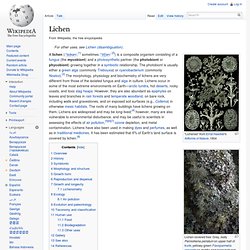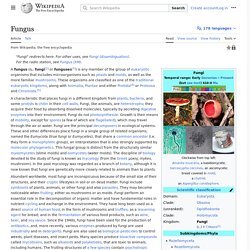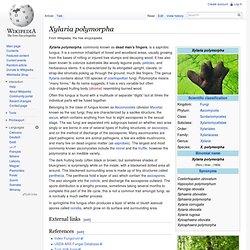

Lichen. A lichen (/ˈlaɪkən/,[1] sometimes /ˈlɪtʃən/ [2]) is a composite organism consisting of a fungus (the mycobiont) and a photosynthetic partner (the photobiont or phycobiont) growing together in a symbiotic relationship.

The photobiont is usually either a green alga (commonly Trebouxia) or cyanobacterium (commonly Nostoc).[3] The morphology, physiology and biochemistry of lichens are very different from those of the isolated fungus and alga in culture. Lichens occur in some of the most extreme environments on Earth—arctic tundra, hot deserts, rocky coasts, and toxic slag heaps. Fungus. Biological kingdom, separate from plants and animals A characteristic that places fungi in a different kingdom from plants, bacteria, and some protists is chitin in their cell walls.

Fungi, like animals, are heterotrophs; they acquire their food by absorbing dissolved molecules, typically by secreting digestive enzymes into their environment. Fungi do not photosynthesize. Growth is their means of mobility, except for spores (a few of which are flagellated), which may travel through the air or water.
Xylaria polymorpha. Dead man's fingers.

Often this fungus is found with a multitude of separate “digits” but at times the individual parts will be fused together. Belonging to the class of fungus known as Ascomycetes (division Mycota) known as the sac fungi, they are characterized by a saclike structure, the ascus, which contains anything from four to eight ascospores in the sexual stage.
The sac fungi are separated into subgroups based on whether asci arise singly or are borne in one of several types of fruiting structures, or ascocarps, and on the method of discharge of the ascospores. Many ascomycetes are plant pathogens, some are animal pathogens, a few are edible mushrooms, and many live on dead organic matter (as saprobes).